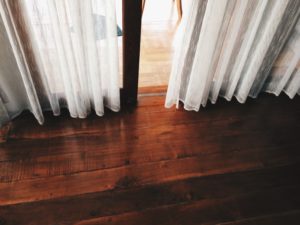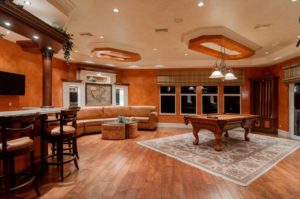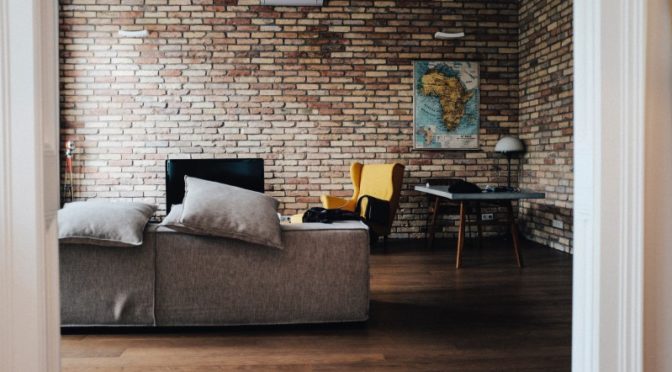
If you asked most people as recently as a few years ago whether they’d choose laminate or hardwood flooring for their homes if money weren’t an option, the vast majority would have picked solid wood. This was an easy decision as long as the money was there to make it. Laminate used to look like fake wood–very fake wood. But times have changed and laminate’s gotten better–a lot better.
While hardwood still takes the prize when it comes to aesthetics, laminate is closing the gap by offering more and more value in other areas while looking more and more upscale. We recently compared hardwoods to engineered wooden floors; today we’re going to compare them to laminate floors to help tease the differences apart for people deciding between them. We’ll also share recommendations for effectively cleaning both (as well as any carpets in your home) with buy-it-for-life vacuums below.
How are laminates and hardwood floors made and how much do they cost?

Laminates are a composite surface made out of two main layers: a protective wear layer, and beneath it, a fiber board or wood chip layer that includes a photograph of a wood or stone pattern. Hardwood, in contrast, is pure wood inside and out. It differs from engineered wood, which includes a hardwood veneer but is primarily made from plywood.
When it comes to costs, you’re always going to spend less on laminates than on hardwoods of equivalent quality. Decent laminates start at around $3 per square foot; you can pay less, but you won’t be happy with what you get, both in terms of appearance and in longevity. Hardwood will start at around $4 per square foot for low-end red oak, ash, and maple woods. If you want a wider plank floor for a common species or narrow flooring for a rare or exotic species, you can expect to start at $5 per square foot and you might not see a ceiling for many more dollars.
Which last longer, hardwood floors or laminate? And can both be refinished and resanded?

When it comes to longevity and durability, hardwood still beats laminate, and easily. Properly cared for hardwood floors can last for hundreds of years (much like trees). However, if your floors become damaged by water, they can quickly become worthless if you don’t repair them soon enough. Hardwood can also be discolored by UV rays from sunlight.
Laminates will typically only last for around 15 years in best case scenarios before breaking down; they can be damaged from water ingress, UV rays, and nicks, dents, and scratches from children’s toys, and furniture legs.

Part of what gives hardwood a much longer useful lifespan than laminates is the fact that you can sand and refinish them several times to restore original appearance. Laminate flooring, in contrast, can only be replaced once its appearance is marred; neither sanding nor refinishing are valid options. It’s important to note that you might struggle to refinish pre-finished hardwood the first time you decide to do so due to the durability of the urethane finish applied at the factory.
How easy is laminate to install vs hardwood, and where can each be installed?

If you want to do it yourself, you’ll have a much easier time installing laminate flooring than solid wood. You can typically snap together laminate floor planks without glue or special tools when installing them. Wood, in contrast, will be much tougher for non-pros to successfully install. You’ll need to buy or rent specialized tools like floor staplers to get the job done, and then you’ll need to learn to use them without damaging your floors.
When installing laminates, you’ll install them without connecting them to the subfloor; in other words, they’ll be floating floors, unlike hardwood, which can’t be installed this way. If you want a wooden floating floor, you’ll want to look to engineered woods. It’s important to note that while you can install laminate floors below grade (i.e., in basements), neither floor should be installed there if you have a choice; there are far better floors for basements.

Moisture is a weakness of both floors. You can install laminate in semi-moist rooms like kitchens and bathrooms that see minimal use, but it’s not going to keep water out nearly as well as floors like ceramic tile, vinyl, or concrete. Hardwood floors, in contrast, should never be installed in moisture-prone environments, although it can work in kitchens. If you’re going to install hardwood in an area that might see small amounts of water, it’s better to choose site-finished (i.e., unfinished) hardwood over pre-finished woods since the sealant used on-site will also seal floorboard gaps, reducing the odds of water infiltration.
How is retail value affected by choosing solid hardwood over laminate flooring?

While laminate floors are better than they’ve ever been, they still won’t come close to hardwood when it comes to resale value. A well-cared for solid wood floor will give more money every time than just about any laminate floor, although this equation can and will change dramatically with lower quality hardwoods vs. premium laminates.
Overall, buy laminate floors if you’re interested in ease of installation, low expenses, and simple maintenance. Buy hardwood if you’re interested in adding as much aesthetic and financial value to your home as possible.
Which vacuums are good investment for homes with hardwood, laminate, and carpeted floors?

While you can use nearly any vacuum on the market to vacuum laminate, hardwood, and other bare floors, we tend to recommend choosing a high-end model with a Parquet head for polishing and effectively cleaning bare floors and an electric brush head to make quick work of carpets, regardless of style or pile. Two examples that fit the bill are the Miele Complete C3 Cat & Dog (reviewed here and here) and Miele Compact C2 Electro+ (reviewed here and here); both will also last long enough to vacuum whatever floors you use in your home for as long as you own your home.
![]() You can buy the Miele Complete C3 Cat & Dog here on Amazon or buy the Miele Compact C2 Electro+ here.
You can buy the Miele Complete C3 Cat & Dog here on Amazon or buy the Miele Compact C2 Electro+ here.
![]() Canadians can buy the Miele C3 Cat & Dog here or buy the Compact Electro+ here.
Canadians can buy the Miele C3 Cat & Dog here or buy the Compact Electro+ here.
 If you find our research on PMC helpful, you can follow our efforts to keep maniacally reviewing home cleaning tools by shopping through our links above. We promise to keep fighting the good fight against every horror children, animals, and grown, yet messy humans can inflict upon a clean home.
If you find our research on PMC helpful, you can follow our efforts to keep maniacally reviewing home cleaning tools by shopping through our links above. We promise to keep fighting the good fight against every horror children, animals, and grown, yet messy humans can inflict upon a clean home.

